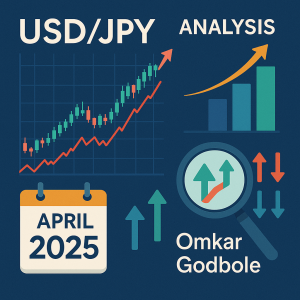Introduction
In the fast-paced world of Forex trading, staying ahead of the curve is crucial for making successful trades. One of the most effective tools traders use to gain insights into the market is Forex signals. But what exactly are Forex signals, and how can you use them to maximize your trading potential?
This article will dive deep into Forex signals, explaining what they are, the different types available, how they work, and how you can use them to make informed trading decisions. By the end of this article, you will have a solid understanding of how Forex signals can help you succeed in the competitive world of Forex trading.
Understanding Forex Signals
Forex signals are a vital tool for both novice and experienced traders, providing valuable insights into the Forex market. These signals are essentially indicators or recommendations based on various forms of analysis that suggest the best times to enter or exit a trade. Forex signals can come in various forms, including:
- Technical Analysis Signals
- Fundamental Analysis Signals
- Automated Signals
Each of these signals is designed to help traders make better decisions, minimize risks, and maximize profits in the Forex market.
Types Of Forex Signals
Forex signals are broadly categorized based on the source of the information. Let’s explore each type in detail.
1. Technical Analysis Signals
Technical analysis involves using past price data, charts, and indicators to predict future market movements. Forex traders use technical analysis signals to determine the best entry and exit points based on historical price action. These signals are generated by various tools, including:
- Moving Averages: These smooth out price data to help identify trends.
- RSI (Relative Strength Index): This oscillator shows whether a currency pair is overbought or oversold.
- MACD (Moving Average Convergence Divergence): A trend-following momentum indicator.
Technical analysis signals are beneficial because they are objective and based on historical data, which can often provide clear patterns for future price movements.
2. Fundamental Analysis Signals
Fundamental analysis focuses on understanding the economic, financial, and geopolitical factors that affect currency prices. These factors include interest rates, economic reports (such as GDP and unemployment rates), and news events like political changes or natural disasters. Fundamental analysis signals are usually based on:
- Economic Data Releases: Reports on inflation, employment, and GDP that affect currency movements.
- Interest Rates: Central banks’ decisions on interest rates have a direct impact on currency strength.
- News Events: Political developments, trade agreements, and geopolitical tensions often lead to major price shifts.
These signals are particularly valuable for long-term traders who focus on broader economic trends rather than short-term market fluctuations.
3. Automated Signals
With the advancement of technology, automated Forex signals have gained popularity. These signals are generated by trading robots or algorithms that analyze the market in real-time and provide trade recommendations. Automated Forex signals are:
- Fast and Efficient: They can analyze large volumes of data quickly and make trade suggestions without delay.
- Based on Pre-set Conditions: Automated signals operate according to pre-set rules, making them ideal for traders who prefer a hands-off approach.
While automated signals can be effective, traders should still monitor them, as market conditions can change rapidly.
How Do Forex Signals Work?
Forex signals work by analyzing various factors that influence the currency market. When a Forex signal is generated, it typically includes information such as the following:
Entry Point: The price level at which the trader should enter the market.
Exit Point: The price level at which the trader should close their position.
Stop-Loss Level: A pre-determined price level designed to limit potential losses.
Take-Profit Level: A pre-determined price level to lock in profits once the market reaches a specific point.
For example, a Forex signal might say, “Buy EUR/USD at 1.1200, set a stop-loss at 1.1150, and take-profit at 1.1250.” This provides traders with all the necessary information to execute a trade.
The key advantage of Forex signals is that they take the guesswork out of trading. By following the signals, traders can rely on the expertise of signal providers or automated systems to make well-timed decisions.
How To Use Forex Signals Effectively?
Using Forex signals effectively requires a combination of strategy, discipline, and the right tools. Here are some essential tips for making the most of Forex signals:
Choose a Reliable Signal Provider
The accuracy of Forex signals largely depends on the signal provider. Choose a provider with a proven track record of success and transparent trading results. Many signal providers offer free trials, so take advantage of these to assess the quality of their signals before committing.
Combine Signals with Your Own Analysis
While Forex signals can be helpful, they should not be used in isolation. Combine them with your own technical or fundamental analysis to make well-informed trading decisions. This ensures that you’re not solely relying on external sources but incorporating them into your own strategy.
Follow a Trading Plan
It’s important to follow a trading plan that outlines how you’ll use Forex signals in your trades. Set clear rules for risk management, including how much capital you’re willing to risk on each trade. Consistency is key to long-term success in Forex trading.
Monitor Market Conditions
Forex signals may not always be perfect, as the market is constantly changing. Make sure to monitor market conditions, including news events and economic reports, that may impact currency prices. This helps you stay flexible and adjust your trades when necessary.
Practice Risk Management
Even with the best Forex signals, there is always a level of risk involved. Use stop-loss orders to limit your potential losses and never risk more than a small percentage of your capital on a single trade. Proper risk management ensures that you can continue trading even if some of your trades don’t go as planned.
Pros And Cons Of Using Forex Signals
Like any trading tool, Forex signals come with their own set of advantages and disadvantages. Here’s a quick look at the pros and cons:
Pros
Save Time: Forex signals provide ready-made trade recommendations, saving you time in market analysis.
Access to Expert Insights: By using Forex signals, you can benefit from the expertise of professional traders or automated systems.
Improved Decision-Making: Signals help you make more informed decisions by providing data-backed insights.
Cons
Dependence on External Sources: Relying too heavily on Forex signals can make you less independent as a trader.
Quality Variance: Not all Forex signal providers are equally reliable, and poor-quality signals can lead to losses.
Not Foolproof: Forex signals can provide excellent insights, but they don’t guarantee success. Market conditions can change rapidly.
Conclusion
Forex signals are a powerful tool for both beginner and experienced traders, providing timely insights that can help maximize profits and minimize losses. Whether you’re using technical, fundamental, or automated signals, they can significantly enhance your decision-making process and help you navigate the complexities of Forex trading.
However, it’s important to use Forex signals as part of a comprehensive trading strategy, combined with proper risk management, market analysis, and discipline. By doing so, you’ll be better equipped to take advantage of the opportunities the Forex market presents while minimizing the risks.



